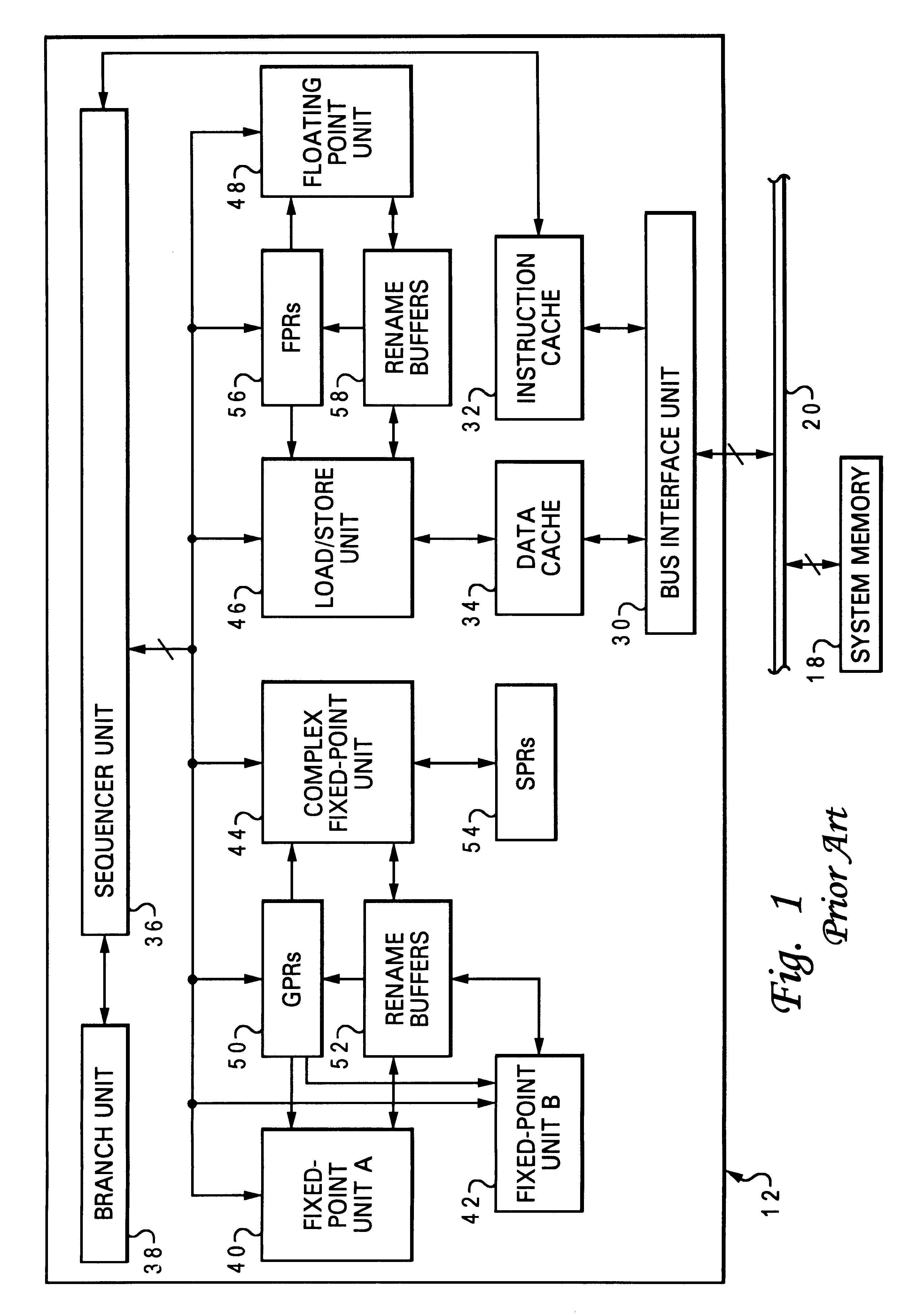Queue-less and state-less layered local data cache mechanism
- Summary
- Abstract
- Description
- Claims
- Application Information
AI Technical Summary
Problems solved by technology
Method used
Image
Examples
Embodiment Construction
With reference now to the figures, and in particular with reference to FIG. 2, a data processing system 120 is shown in which the present invention can be practiced. The data processing system 120 includes processor 122, keyboard 182, and display 196. Keyboard 182 is coupled to processor 122 by a cable 128. Display 196 includes display screen 130, which may be implemented using a cathode ray tube (CRT), a liquid crystal display (LCD), an electrode luminescent panel or the like. The data processing system 120 also includes pointing device 184, which may be implemented using a track ball, a joy stick, touch sensitive tablet or screen, track path, or as illustrated a mouse. The pointing device 184 may be used to move a pointer or cursor on display screen 130. Processor 122 may also be coupled to one or more peripheral devices such a modem 192, CD-ROM 178, network adapter 190, and floppy disk drive 140, each of which may be internal or external to the enclosure or processor 122. An outp...
PUM
 Login to View More
Login to View More Abstract
Description
Claims
Application Information
 Login to View More
Login to View More - R&D
- Intellectual Property
- Life Sciences
- Materials
- Tech Scout
- Unparalleled Data Quality
- Higher Quality Content
- 60% Fewer Hallucinations
Browse by: Latest US Patents, China's latest patents, Technical Efficacy Thesaurus, Application Domain, Technology Topic, Popular Technical Reports.
© 2025 PatSnap. All rights reserved.Legal|Privacy policy|Modern Slavery Act Transparency Statement|Sitemap|About US| Contact US: help@patsnap.com



